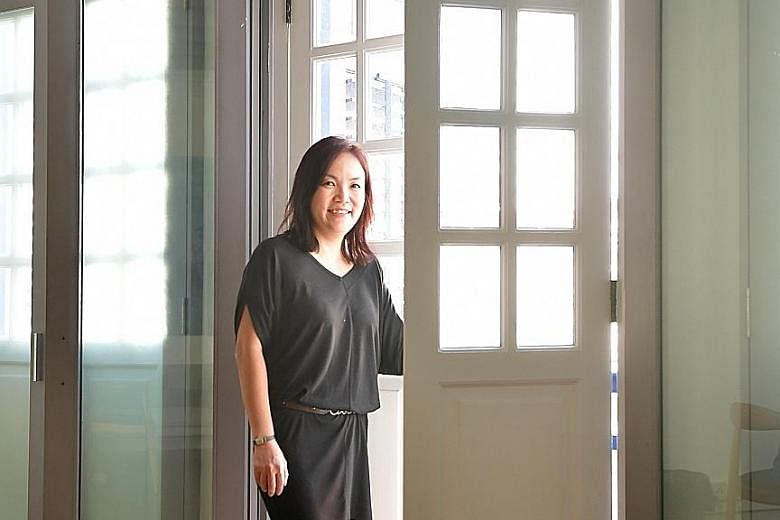On Charmaine Leung's first day of school, her mother warned her not to tell anyone where they lived.
Theirs was an infamous postcode - the red-light district Keong Saik Road, where Leung's mother ran a brothel.
Leung, 44, has written a memoir of her childhood in the gai dau, or "chicken stable" as it was crudely known in Cantonese - partly as an attempt to come to terms with the shadow her mother's profession had cast on both their lives.
"A lot of my childhood was shrouded in shame," she says. Leung, who has a partner, worked in marketing until 2014, when she took a break to write 17A Keong Saik Road, titled after the address of her mother's brothel.
"This is the story of an entire community. Nowadays, we look at it as heritage, but it was their lives."

Keong Saik Road today, with its hipster cafes and swanky bars, was a foreign world to Leung when she returned to Singapore in 2011 after 15 years in Hong Kong.
-
BOOK IT / 17A KEONG SAIK ROAD LAUNCH
-
WHERE: 15A Keong Saik Road
WHEN: Saturday, 4 and 5.15pm, drinks at the Cufflink Club from 5 to 7pm
ADMISSION: Free
She remembers a street where the front doors had light boxes with red numbers on them and beautiful, perfumed women sashaying past loitering men.
These women were prostitutes known as dai gu liong (Cantonese for "big miss"). Each was attached to a specific brothel, which functioned like a booking centre, and might service clients there or be booked out by a different brothel.
"Nobody came willingly to work in a brothel district," says Leung of these women. "They had people to take care of or they had been left by men who had impregnated them. There were many sad stories in this place, but they were professionals - they got on with their lives."
Leung's mother was one such sad story. An unwanted third daughter, she was given up by her birth parents in Selangor and sold to a ma jie, a Chinese domestic helper who had taken a vow of celibacy.
Her adopted mother and aunt ran an entertainment house where courtesans called pei pa zai (Cantonese for "little pipa") performed for male clients. Leung's mother started waitressing there when she was eight and eventually took over running the house, which was converted to a brothel in the 1960s.
Leung was raised by her mother's godmother next door. Her father, a Hong Kong businessman, could not move to Singapore because of visa restrictions.
She resented the brothel because it kept her mother from her. They would see each other only briefly to say goodnight across the adjacent windows between the shophouses, and she would cry so bitterly that the other brothel madams would complain.
As she approached puberty, living in Keong Saik became undesirable. Men would stare and catcall as she passed. To her disgust, some would even try to touch her head.
When she was 11, her mother decided to give up the brothel business. They moved away and her mother became a cleaner instead.
Even today, she says, it is difficult for her mother, now 78, to speak of her past. She is not named in the book, which Leung took a long time to persuade her to open up for.
Ethos Books founder Fong Hoe Fang says: "Charmaine was very brave to write this story. Such stories need to see the light of day in the context of all broken societies."
Leung plans to read the book chapter by chapter in Cantonese to her mother, who cannot read English. "I hope what I am doing will help her to heal all the wounds she needs to heal."
•17A Keong Saik Road ($19.90) is available at Books Kinokuniya, MPH, Booktique, Grassroots Book Room and City Book Room.


